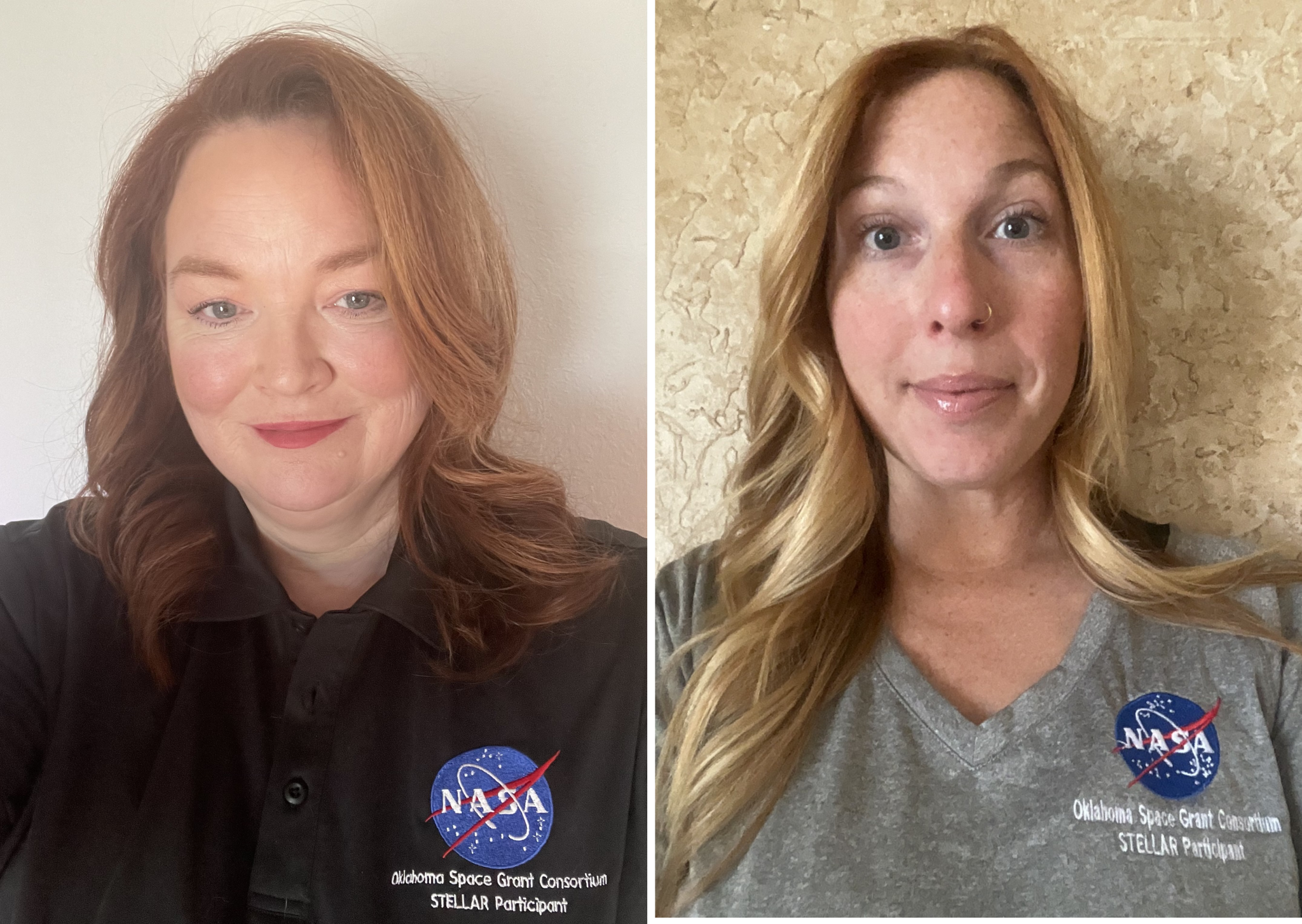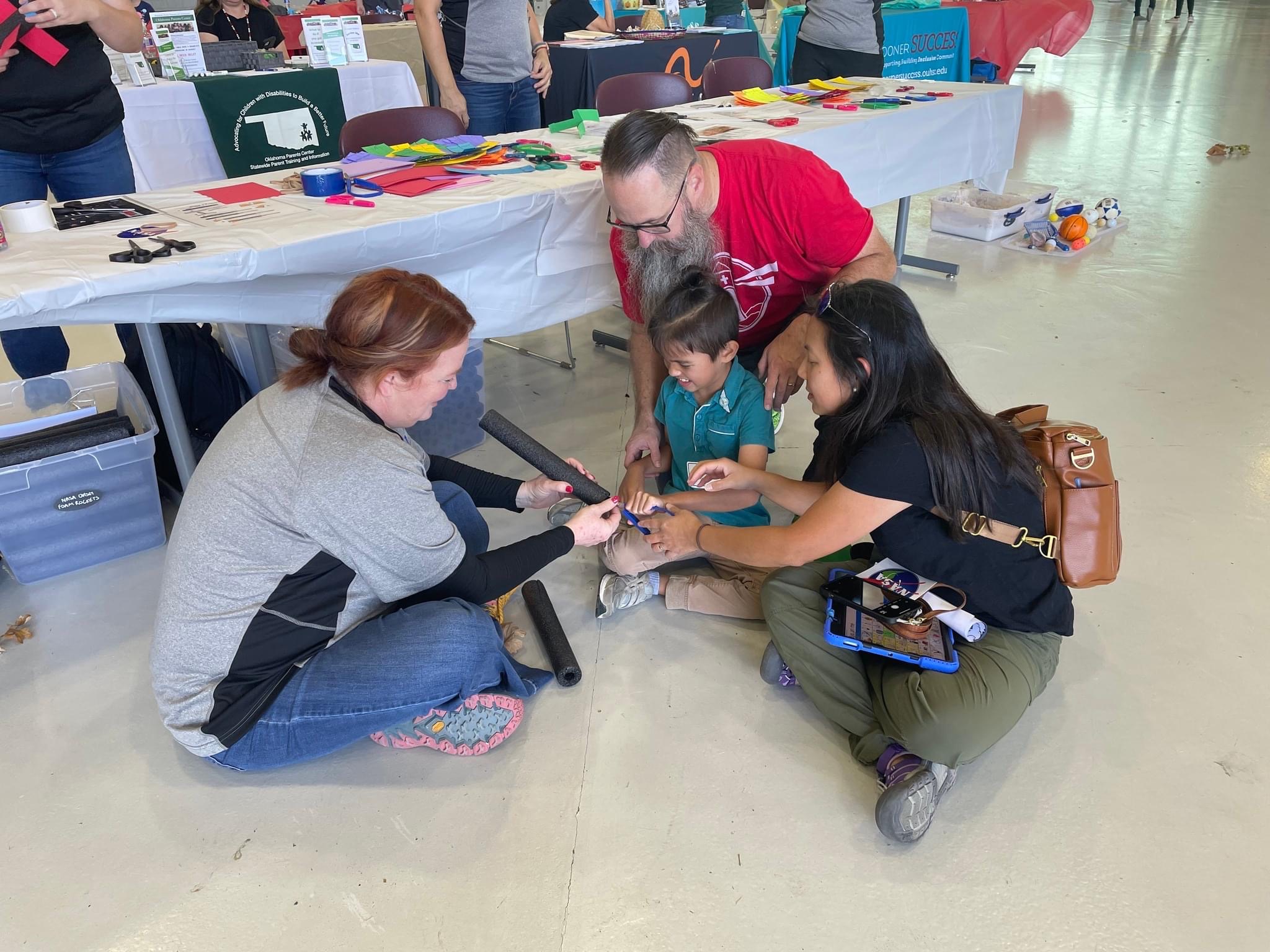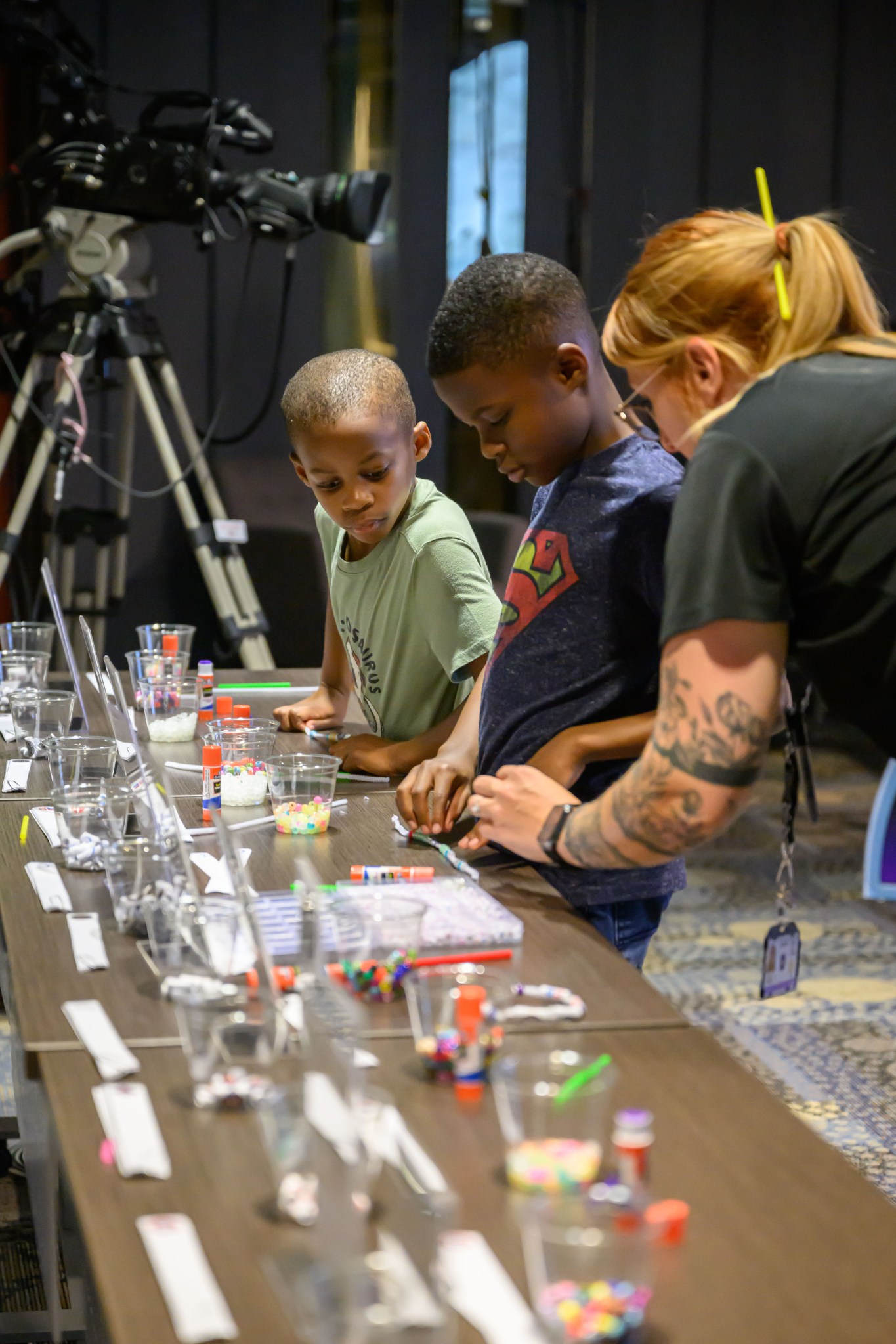The summer months are usually a time for teachers to take a break from the classroom and enjoy some well-earned rest. But at NASA's Johnson Space Center in Houston, two experienced educators dedicated their summer vacations to learning how to enrich their students' science, technology, engineering, and mathematics (STEM) education and inspire them to achieve their dreams.
Johnson's Office of STEM Engagement (OSTEM) welcomed Jerry "Denise" Dunn and Shawnda Folsom as full-time interns for the summer. Both women came to Johnson through the Oklahoma Space Grant Consortium, which not only supports students pursuing STEM careers but also provides curriculum enhancement and professional development opportunities for educators. Dunn and Folsom were invited to become interns after completing STELLAR, the consortium's yearlong mentorship program that immerses educators in hands-on STEM-based activities for classroom application.

For Dunn, a middle school special education teacher in the small town of Checotah, Oklahoma, participating in STELLAR opened several doors that ultimately led to her internship. Dunn works primarily with students who have severe and profound disabilities and is fiercely passionate about increasing their access to STEM education and opportunities.
"If you look at the research, there's been a big push for STEM for everyone except kids with disabilities. The number of people with disabilities in STEM-related fields hasn't changed in a decade," she said. "We need to promote that more."
Dunn suggested that she and her STELLAR colleagues support Challenge Air, a program that teaches children with disabilities about aviation and lets them co-pilot a plane. The STELLAR group set up activity tables at a Challenge Air event where kids could build rockets or make Moon craters and learn about space exploration. That experience inspired the Oklahoma Space Grant Consortium to create an annual STEM engagement event specifically for kids with disabilities and their families.

Dunn subsequently attended the Space Exploration Educators Conference where she connected with Tracy Minish, a former Johnson employee with more than 30 years of experience in the Space Shuttle Program and Mission Control Center who is also legally blind. Minish met virtually with Dunn's students to encourage them to pursue their dreams, then invited her to Johnson to learn about the accommodations and support NASA provides to employees with disabilities. Dunn used what she learned to create a teacher workshop that shared practical strategies for STEM special education. These efforts and the connections she made at Johnson paved the way for her internship.
"I want to know more about what NASA does to support its employees with disabilities. I also want to know more about those employees and their stories so that I can share that with my students," she said. Dunn also appreciated connecting with Johnson's No Boundaries Employee Resource Group because they have the power to provide representation for kids with disabilities.
"Kids with disabilities are just natural problem solvers and they have unique perspectives, and they need to see their value," she said. "And NASA - what a great place for them to see that."
For Folsom, an elementary-level science and social studies teacher for Velma-Alma Public Schools, the internship offer came at a time of personal and professional change. In addition to planning her upcoming wedding and a move, juggling her kids' schedules, and pursuing a master's degree in education, Folsom was also preparing to take on a new, school district-wide role. "I am ecstatic to take on a new challenge - building, implementing, and teaching a comprehensive STEM program for students from pre-kindergarten through 12th grade," she said. She saw the internship as a chance to immerse herself in NASA's work and bring new opportunities for STEM learning and engagement back to her students. "I was not aware of all of the student design challenges that NASA has, so I am super excited to share these and have future classes participate in them," she said.

Folsom is also determined to see more NASA interns from her school district, which is extremely rural and qualifies for Title I support. "My goal is to shake the right hands and make the connections that will allow me to set my students up for their future, which hopefully will include an internship for many of them," she said. "I want my 'small town' mindset students to realize how much talent and potential they each have. I want them to know they can do anything." She noted that her own story - which involves a nontraditional career path and now, at 41, an internship - could help inspire her students.
Together with their OSTEM mentors and teammates, Dunn and Folsom spent their summer creating hands-on activities for children who attended events like Johnson's Bring Youth to Work Day and the Dorothy Vaughan Center in Honor of the Women of Apollo dedication. They prepared an aerodynamics lesson plan and STEM activity for the MLB Players STEM League Global Championship in July, supported and participated in NASA-led professional development programs for teachers, and worked on a new camp experience resource to complement OSTEM's 'First Woman' camp experience.
Both women look forward to returning to their schools later this month and to sharing what they learned with their students.
"I want to expose my students to higher-level thinking and new STEM challenges," said Folsom. "I want them to have those 'a ha' moments that will possibly launch their lives down a path they never fathomed could happen."
"This internship has made me more aware of opportunities, not only to continue to advocate for my students, but for myself," Dunn said. "Keep going. Keep dreaming."






